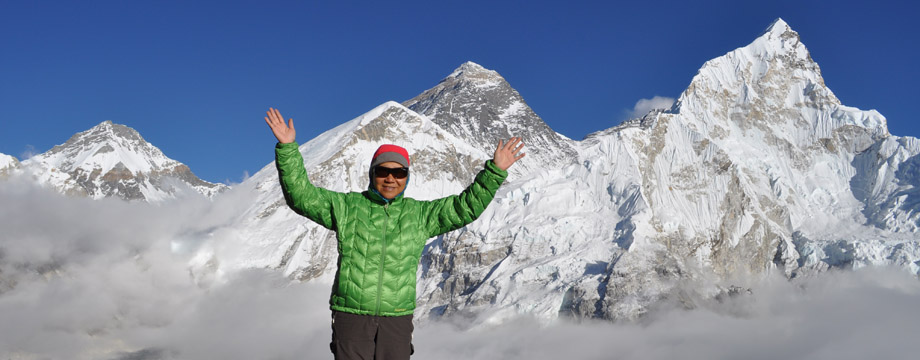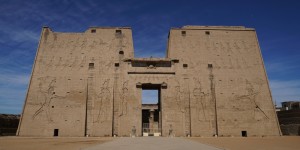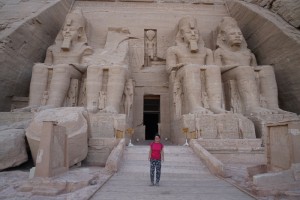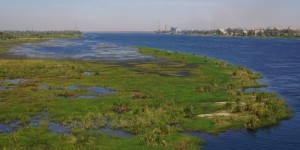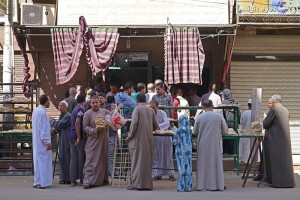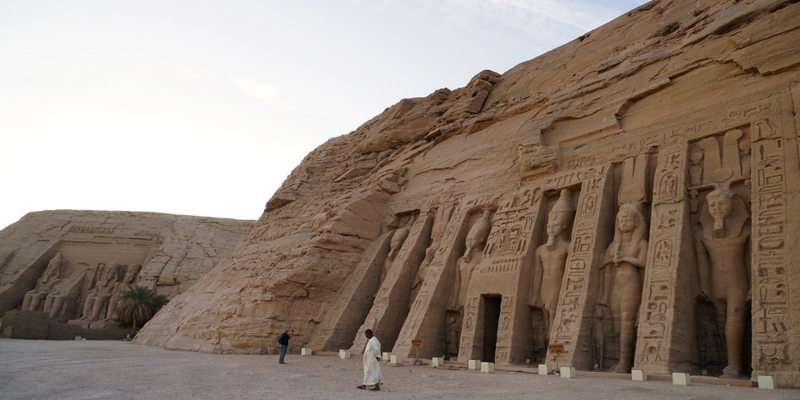26 Days from Cairo to Khartoum: Day 14 – 19: Edfu, Aswan & Abu Simbel
Day 14 November 4 Friday: Luxor – Edfu – Aswan
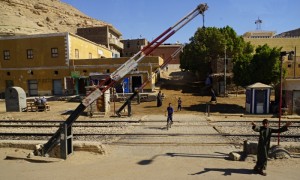 |
We set off early and drove 115km to Edfu. By 11am, we visited the Temple of Edfu on our own. Dedicated to the falcon god Horusit was built during the Ptolemaic period beginning in 237 BC and finished in 57 BC under Ptolemy XII. The temple reflects traditional pharaonic architecture and it is the second largest in Egypt after the Karnak Temple. The oldest part is the section from the Festival Hall to the Sanctuary. The Hypostyle Hall was added by Ptolemy VII (145-116 BC) and the pylon was erected by Ptolemy IX (88-81 BC). It is one of the best preserved cult temples in Egypt.
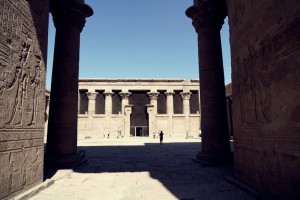 |
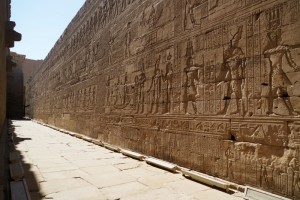 |
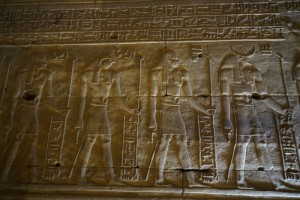 |
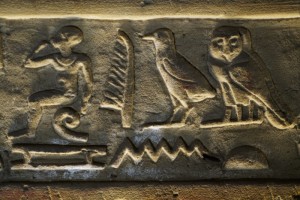 |
The temple fell into disuse when non-Christian worship was banned within the Roman Empire in 391AD and many of the carved reliefs were razed. The ceiling of the hypostyle hall was partially destroyed and blackened as a result of arson. Buried beneath drifting sand and layer of river silt, only the upper reaches of the temple pylons were visible by 1798 when a French expedition identified the temple. Excavation began in 1860 by Auguste Mariette, a French Egyptologist.
Horus, originally the sky god, was later assimilated into the popular myth of Isis and Osiris as the divine couple’s child. Raised by Isis and Hathor after Osiris’ murder by his brother Seth, Horus avenged his father’s death in a great Battle of Edfu. Seth was exiled and Horus took the throne. All pharaohs claimed to be the incarnation of Horus, the “living king”.
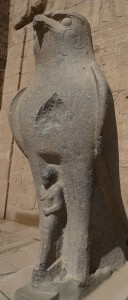 |
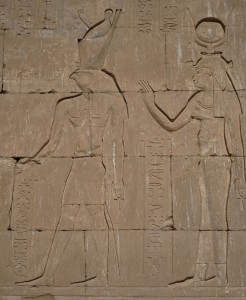 |
 |
The temple covered with carved reliefs is awe-inspiring. The pylon standing 37m high is among the largest in Egypt. An impressive pair of black granite Horus statues stand outside the Hypostyle Hall which has two rows of six pillars supporting an intact roof. The ceiling has astronomical paintings symbolising the sky and stars.
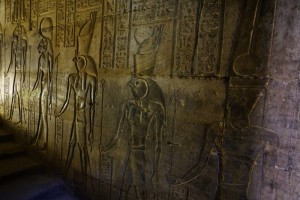 |
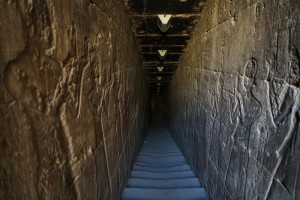 |
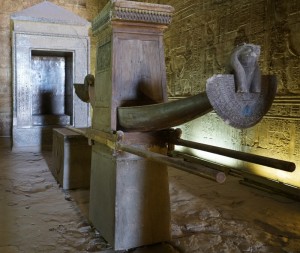 |
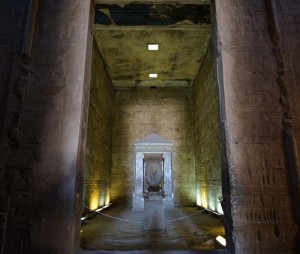 |
I wandered through the Festival Hall and Hall of Offerings before arriving at the Sanctuary of Horus, the holiest part of the temple. The sanctuary centres on a black-granite shrine dedicated to Nectanebo II. Next to the shrine is an offering table and the ceremonial barge on which Horus was carried during festivals. The main temple is surrounded by a corridor which walls are covered with beautiful relief sculptures. I wish I had a guide who could explain the stories.
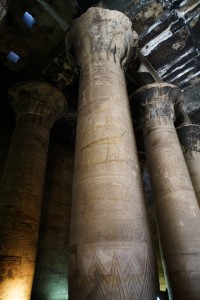 |
 |
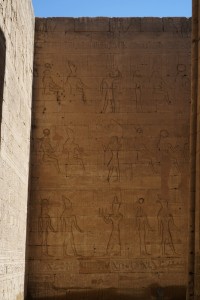 |
Aswan is only 110km from Edfu. We had a quick lunch, reached Aswan around 4pm and checked in the Orchida Hotel close to the Nile. My plan was to watch sunset over the Nile from the Old Cataract Hotel. Steward was interested too. We found our way to this beautifully restored grand old hotel on the east bank of the Nile. By the time we arrived, the sun was almost gone. So we did not take a drink in the hotel and decided to walk back to our hotel.
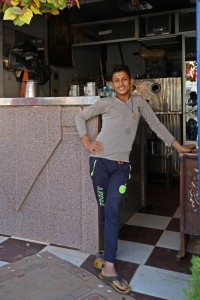 |
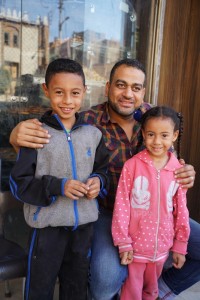 |
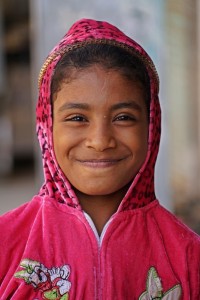 |
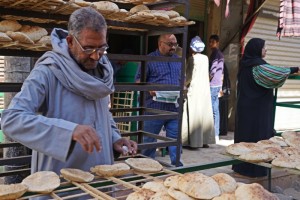 |
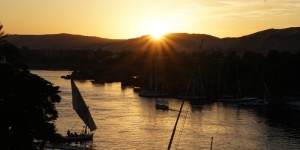 Then we ran into Janice and Barbara who were heading to the Coptic Cathedral and Nubian Museum. We joined them and spent an hour in the museum which features Nubian treasures recovered before flooding of Upper Egypt during the construction of the Aswan High Dam (entrance fee: E₤60). Owing to poor lighting and dull display, I did not stay long to read the information on all the exhibits and learn more about the Nubian history. What a pity!
Then we ran into Janice and Barbara who were heading to the Coptic Cathedral and Nubian Museum. We joined them and spent an hour in the museum which features Nubian treasures recovered before flooding of Upper Egypt during the construction of the Aswan High Dam (entrance fee: E₤60). Owing to poor lighting and dull display, I did not stay long to read the information on all the exhibits and learn more about the Nubian history. What a pity!
Both Janice and I were hungry and tried to find a decent local eatery. We ended up spending over half an hour and eventually found a good one fairly far from our hotel. I had liver and rice. Then we spent another 15 minutes walking back to the hotel. I think I must have covered the main areas of Aswan in a day! 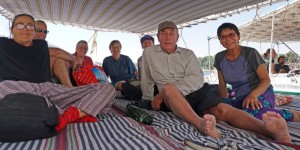
Day 15 November 5 Saturday: Aswan
The hotel has surprisingly good and free Wi-Fi. I therefore spent the morning messaging my family and friends and catching up on the news. Ryan had arranged an overnight stay on atraditional felucca for the group. We got on board before noon with the 60+ on one boat and the young ones on the other. Each boat was manned by two men: one at the oar at the back and one handling the sail at the front. We had a simple lunch before the boats set sail to the west bank. It sailed with the wind smoothly and quietly while we laid lazily on the cushions. I watched things go by and could imagine life on the Nile in the past 5000 years.
 We were given an hour to explore the rock-hewn tombs of the nobles located at the northern hills of the west bank. These tombs dating from the Old kingdom to the Roman period are now locked or blocked off. Only five tombs are open and visitors with a ticket (E₤40) can visit three of them. Mat and I got a ticket and were walking behind a large group of American tourists. They were slow and we did not want to follow the group. So we made a detour to the top of the sand dune to see Kubbet el- Hawa, a shrine / tomb of a local sheikh and holy man where we had amazing views of Aswan, the Nile, the surrounding landscape and the mausoleum of Mohammed Shah Aga Khan, tomb of the 48th imam of the Ismaili sect and his wife.
We were given an hour to explore the rock-hewn tombs of the nobles located at the northern hills of the west bank. These tombs dating from the Old kingdom to the Roman period are now locked or blocked off. Only five tombs are open and visitors with a ticket (E₤40) can visit three of them. Mat and I got a ticket and were walking behind a large group of American tourists. They were slow and we did not want to follow the group. So we made a detour to the top of the sand dune to see Kubbet el- Hawa, a shrine / tomb of a local sheikh and holy man where we had amazing views of Aswan, the Nile, the surrounding landscape and the mausoleum of Mohammed Shah Aga Khan, tomb of the 48th imam of the Ismaili sect and his wife.
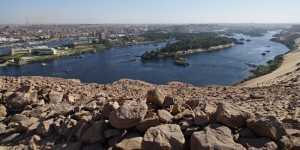 |
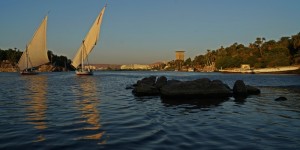 |
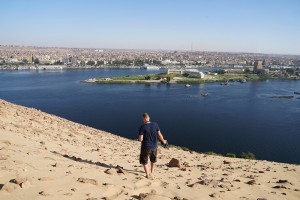 |
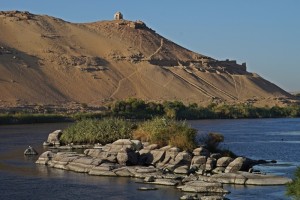 |
We slided down the steep sandy slope to reach the tombs. We peeped through the locked iron doors but could not see anything inside. Luckily we arrived just in time to get into the last tomb with the American group and had a quick tour. I gather this is the Tomb of Sarenput II, one of the most beautiful and preserved tombs with intact wall paintings. We were late by 15 minutes.
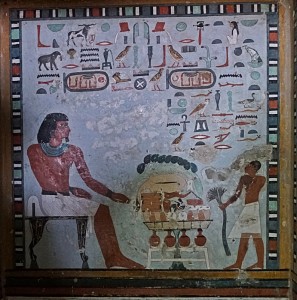 |
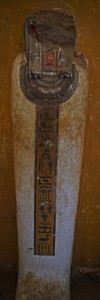 |
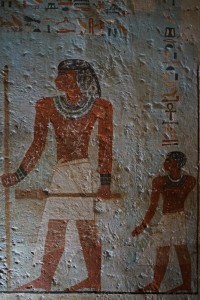 |
Our second stop was the Botanic Garden on Kitchener’s Island. I paid E₤20 for a ticket and spent over half an hour strolling in this leafy oasis with trees brought here from all over the world. Barbara did not turn up on time. So one boat sailed to the Elephantine Island to visit a Nubian village while another boat stayed behind to wait for Barbara.
I had a wonderful stroll through the village with Ali, our boatman and guide. He is Nubian and his family comes from this village. I saw children playing football and ladies sitting outside their houses, some of which are painted with bright colours and simple patterns. I am curious about the life of the Nubian and love to take photos of the narrow alleys, street scape and people. I also tried to peep whenever the door was open. The houses, though simply furnished, look tidy and clean.
 |
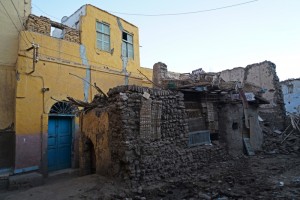 |
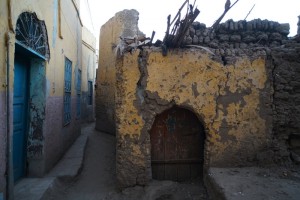 |
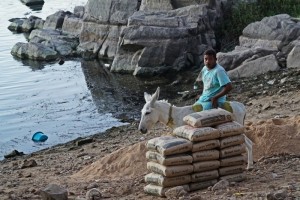 |
It was getting dark. Our boat sailed right across the river and moored next to the other boat. We had fried fish for dinner. By 8pm, I was already for bed while the young ones were chatting and drinking. Soon, I heard nothing as I was fast asleep in my comfortable down sleeping bag.
Day 16 November 6 Sunday: Aswan
I woke up around 4pm when it was still dark. Around 5am, I stepped ashore to watch sunrise. I walked half-way up the sandtune for a better view of sunrise behind the distant low- lying sandy ridge across the Nile.
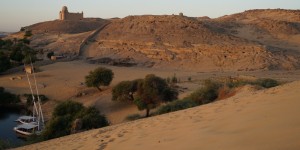 |
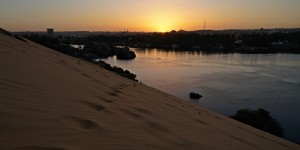 |
After having a cup of tea, the boats sailed across the river and we were back at the pier before 8am. Our boatmen served us breakfast with omelet and local bread and coffee. By 8:30am, we were back in our hotel. After a hot shower, I felt nice and clean and was ready to go to the Sudanese Consulate.
Visa application for Sudan is most time consuming and costly. Dragoman has advised us to use a travel agent in Khartoum to handle our application. I scanned my passport and sent it to the agent in early September. The agent then submitted the group list together with passport details to the Ministry of Foreign Affairs in order to obtain a group visa number. I paid around US$300 for the visa and handling charge! (I later found out from two independent travellers from Germany that one can apply without a support letter in Aswan thus saving the handling charge. But the visa would take five days to issue).
Mohammed, the agent’s representative in Aswan met the group in the lobby after 10am. We arrived at the Sudanese Consulate after 11am to submit our application form with two photos in person. There was not enough application forms and the staff had to make photocopies. It took over an hour to sumbit our 19 applications. Then we hanged around till 2:45pm when Ryan told us that our visa would be ready for collection the next day. He could pick up the passports for the group.
Time to celebrate! I joined the group to have a sunset drink at the Old Cataract Hotel at 4pm. A cold beer cost less than E₤40. Very cheap for a five-star hotel with superb views over the Nile and excellent service.
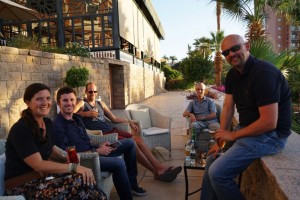 |
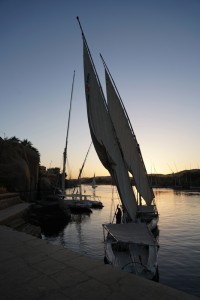 |
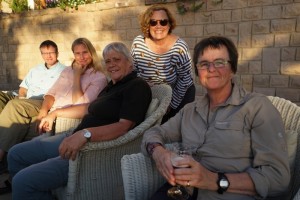 |
Cory, Jason, Maddy, Alexis, Rinske and I decided to go to a well-known fish restaurant called ‘Chief Khalli’ for dinner. We had calamari, fish and prawn and paid E₤160 each. We then had a leisure stroll through the souq which is atmospheric. The night was nice and cool. All the shops and street stalls were open. The locals looked relaxed and cheerful. I had a good sleep as I had not slept well on the boat.
Day 17 November 7 Monday: High Dam & Philae Temple, Aswan
We asked Mohammed to arrange two minibuses to take us to the Aswan High Dam (commonly known as the High Dam) and Philae. Wepaid E₤60 each for the transportationfrom 9 am to 1 pm. Good value! We crossed the Aswan Low Dam built between 1898 and 1902 before arriving at the High Dam.
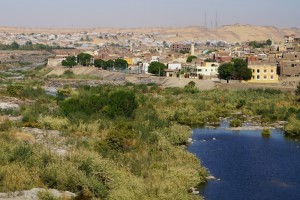 |
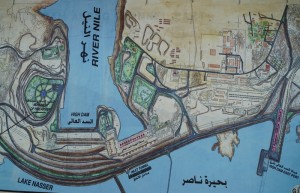 |
Plans to build a larger dam to control floods, provide water for irrigation and generate hydroelectricity became a key objective of the Egyptian government following the 1952 Revolution. The dam constructed between 1960 and 1970, measures111m high, 980m wide at the base and 3830m long and can contain 43,000,000m³ of material. At maximum, 11,000m³ of water can pass through it per second. The reservoir named Lake Nasser is 550km long and 35 km at its widest with a surface area of 5,250km².
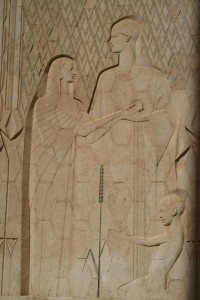 |
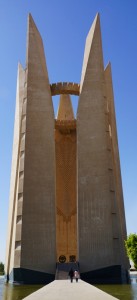 |
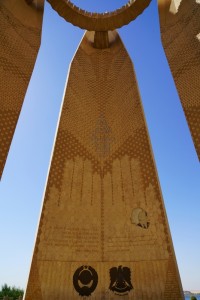 |
The dam has a significant effect on the economy and culture of Egypt. It has helped in protection of floods and droughts, an increase in agricultural production and employment, electricity production and improved navigation. Nonetheless, it has flooded much of the lower Nubia causing the relocation of over 100,000 people (mostly Nubian). Many archaeological sites have been submerged and only 22 monuments and architectural complexes, including the Abu Simbel temples and Philae, have been preserved and relocated under the UNESCO Nubia Campaign. The dam has also been blamed for coastline erosion, soil salinity and health problems.
We paid E₤20 to enter the restricted area. The dam is unarguably massive and Lake Nasser is expansive. The lotus-shaped Arab-Soviet Friendship Monument reminds visitors that the dam had been built with the aid of the former USSR. President Nasser had poor relationship with the US and western countries following the nationalisation of Suez Canal and the Suez War in 1956 and turned to the Soviet for support.
Then we proceeded to visit the Philae Temple complexwhich has been relocated to Agilkia Island in the reservoir of the Aswan Low Dam. Philae an island originally located near the expansive First Cataract of the Nile in Upper Egypt, was said to be one of the burying places of Osiris. It was also an important commerce centre between Memphis and Meroe (in Sudan now). Simon bargained hard with a boatman and we finally paid around E₤300 for a boat. The entrance fee to the temple is E₤60.
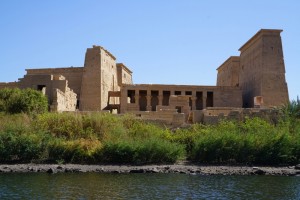 |
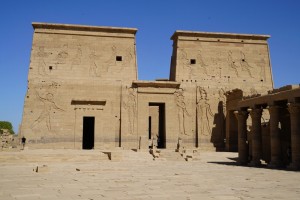 |
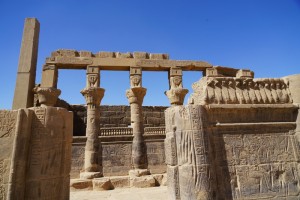 |
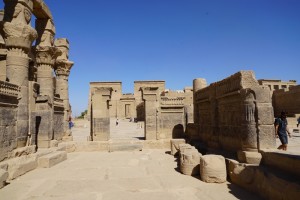 |
Today, the temple complex has been beautifully restored and erected at its present site. I approached the great temple – Temple of Isis, through a double colonnade. This great temple was built in the reign of Nectanebo I during 380-362 BC. In front of the propyla are two colossal lions in granite, behind which stand a pair of 13-m high obelisks. The story of Isiris is represented beautifully everywhere on the walls of the temple. There are many small temples dedicated to Isis, Hathor and a wide range of deities related to midwifery. But the images/icons/carving/sculptures especially the faces of the deities have been mutilated by zealous Christians.
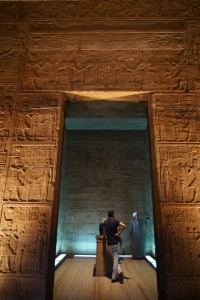 |
 |
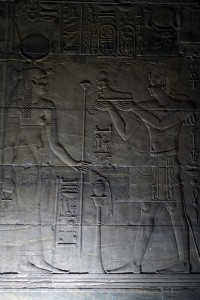 |
Outside the great temple is a small temple dedicated to Hathor. The capitals here represented various forms and combinations of the palm branch, the doum palm branch and the lotus flower. Outside the great temple, These and the sculptures on the columns, the ceilings and the walls were painted with vivid colours.
 |
I planned to have a late lunch at ‘Chief Khalli’ before visiting the museum where the unfinished obelisk is located and the Fatimid Cemetery (both near the Nubian Museum). I ran into Alexis in the lobby who was planning to return to the same restaurant. I like Alexis who is a travel consultant: we have lots of common interest. We went out at 3pm and I had a grilled sole while Alexis had calamari. We paid E₤110 each.
 Unfortunately, when I arrived at the museum (which is a former quarry site) around 4:30pm, it was already closed. Anyway, I caught a glimpse of the obelisk which was the largest known ancient obelisk carved directly out of bedrock. If finished it would have measured around 42m and weighed nearly 1200 tons. I strolled through the Fatimid Cemetery which is now a crumbling graveyard before reaching the Old Cataract Hotel. Alexis had already comfortably seated in the terrace. Both of us enjoy the atmosphere, landscape and above all the timeless Nile. Alexis had heard about a wedding at the Coptic Cathedral at 7pm. It’s the first time I watched such a ceremony. An interesting experience!
Unfortunately, when I arrived at the museum (which is a former quarry site) around 4:30pm, it was already closed. Anyway, I caught a glimpse of the obelisk which was the largest known ancient obelisk carved directly out of bedrock. If finished it would have measured around 42m and weighed nearly 1200 tons. I strolled through the Fatimid Cemetery which is now a crumbling graveyard before reaching the Old Cataract Hotel. Alexis had already comfortably seated in the terrace. Both of us enjoy the atmosphere, landscape and above all the timeless Nile. Alexis had heard about a wedding at the Coptic Cathedral at 7pm. It’s the first time I watched such a ceremony. An interesting experience!
Day 18 November 8 Tuesday: Aswan – Abu Simbel
We had a pleasant 4-hour drive and arrived at a Nubian-styled guesthouse in Abu Simbel at 2pm. An hour later, we reached the world-famous and iconic Abu Simbel temples (entrance fee: E₤ 100).
The complex comprising a Great Temple and a Small Temple was relocated in its entirety in 1968 to the present site (about 65m above and 200m further back from the original site) on the west bank of Lake Nasser (about 230km from Aswan). Construction of the twin temples carved out of the mountainside took about 20 years (c. 1264 -1244 BC) as a lasting monument to Ramses II and his queen Nefertari, to commemorate his victory at the Battle of Kadesh. The purpose was to impress Egypt’s southern neighbours and to reinforce the status of Egyptian religion in the region. The complex and its colossal statues were forgotten and buried by sand till 1813 when Jean-Louis Burckhardt, a Swiss orientalist discovered the top frieze of the main temple. Giovanni Belzoni began excavation in 1817.
The Temple of Ramses II
The Great Temple, dedicated to the gods of Amun, Ra-Horakhty, Ptah and the deified Ramses II himself, is generally considered the grandest and most beautiful of the temples commissioned during the reign of Ramses II and one of the most beautiful in Egypt. The 35m-wide facade of the temple is decorated with iconicnfour colossal 20-metre statues of Ramses II with the double Atef crown of Upper and Lower Egypt. The statue to the left of the entrance was damaged in an earthquake, leaving only the lower part of the statue still intact. There are several statues no higher than the knees of the pharaohs next to the legs of the colossi depicting Nefertari, his chief wife, his first two sons and first six daughters.
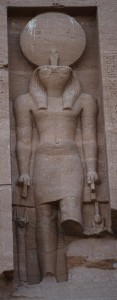 |
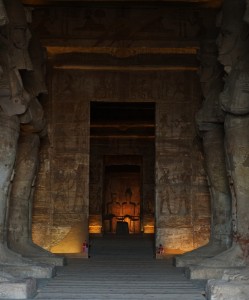 |
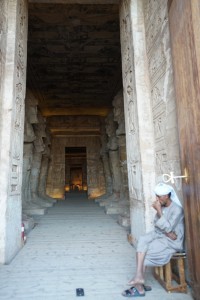 |
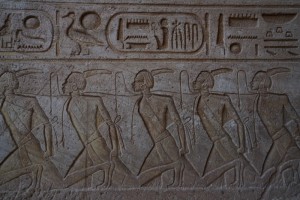 The interior of the temple is all covered with outstanding relief sculptures relating to the deified pharaoh. The inner part of the temple has the same triangular layout found in most ancient Egyptian temples, with rooms decreasing in size from entrance to the sanctuary. The temple has many side chambers with beautiful reliefs. The 18m long and 16.7m wide Hypostyle Hall is supported by eight huge Osirid pillars depicting the deified Ramses linked to the god Osiris, the god of the Underworld, to indicate the everlasting nature of the pharaoh. The vivid and impressive bas-reliefs on the walls depicts the military campaigns Ramses II had waged including the Battle of Kadesh in which he fought against the Hittites. The most famous relief shows the pharaoh on his chariot shooting arrows against his fleeing enemies. Other scenes show Egyptian victories in Libya and Nubia. The next hall is a pillared hall with four pillars decorated with beautiful scenes of offerings to the gods.
The interior of the temple is all covered with outstanding relief sculptures relating to the deified pharaoh. The inner part of the temple has the same triangular layout found in most ancient Egyptian temples, with rooms decreasing in size from entrance to the sanctuary. The temple has many side chambers with beautiful reliefs. The 18m long and 16.7m wide Hypostyle Hall is supported by eight huge Osirid pillars depicting the deified Ramses linked to the god Osiris, the god of the Underworld, to indicate the everlasting nature of the pharaoh. The vivid and impressive bas-reliefs on the walls depicts the military campaigns Ramses II had waged including the Battle of Kadesh in which he fought against the Hittites. The most famous relief shows the pharaoh on his chariot shooting arrows against his fleeing enemies. Other scenes show Egyptian victories in Libya and Nubia. The next hall is a pillared hall with four pillars decorated with beautiful scenes of offerings to the gods.
On the back wall of the sanctuary located at the end of the temple are four rock cut sculptures of four seated figures of Ra-Horakhty, the deified pharaoh Ramses II, and the gods of Amun Ra and Ptah. It is believed that the axis of the temple was positioned in such a way that on October 22 and February 22, the sun rays would penetrate the sanctuary illuminating the four sculptures except the statue of Ptah, a god connected with the Underworld who always remained in the dark.
The Temple of Nefertari
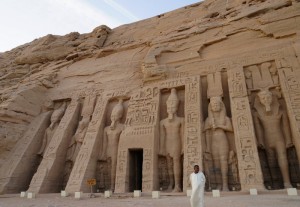 The Small temple, built about 100m northeast of the Great Temple and dedicated to Hathor and Nefertari, is a simplified version of the Great Temple. This is the second time in ancient Egyptian history that a temple was dedicated to a queen. The first time was when Akhenaten dedicated a temple to his wife Nefertiti. The rock-cut facade is again decorated with two groups of colossi (10m- high statues of Ramses II and Nefertari) that are separated by a large gangway. It is the only instance in Egyptian art that the statues of the king and his consort have equal size. Traditionally the statues of the queens stood next to those of the pharaoh but were never taller than his knees. There are small statues of four princes and two princesses positioned symmetrically next to their parents.
The Small temple, built about 100m northeast of the Great Temple and dedicated to Hathor and Nefertari, is a simplified version of the Great Temple. This is the second time in ancient Egyptian history that a temple was dedicated to a queen. The first time was when Akhenaten dedicated a temple to his wife Nefertiti. The rock-cut facade is again decorated with two groups of colossi (10m- high statues of Ramses II and Nefertari) that are separated by a large gangway. It is the only instance in Egyptian art that the statues of the king and his consort have equal size. Traditionally the statues of the queens stood next to those of the pharaoh but were never taller than his knees. There are small statues of four princes and two princesses positioned symmetrically next to their parents.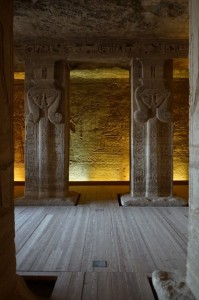
In the Hypostyle Hall, the capitals of the six pillars bear the face of the goddess of Hathor. Reliefs here are scenes with the queen playing the sistrum and the pharaoh presenting flowers. The bas-reliefs in the pillared hall illustrate the deification of the pharaoh, the destruction of enemies in the north and south by the pharaoh accompanied by his wife, and the queen making offering to the goddess of Hathor. There are more bas-reliefs in the chambers at the last section of the temple depicting the couple making offerings to Hathor, Horus and other divinities.
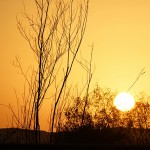 We saw only a couple of visitors during our visit. I suppose the best time for a visit is in the morning when the sun rays light up the facade of the temples. Anyway we saw a beautiful orange red sunset over Lake Nasser by the time we left.
We saw only a couple of visitors during our visit. I suppose the best time for a visit is in the morning when the sun rays light up the facade of the temples. Anyway we saw a beautiful orange red sunset over Lake Nasser by the time we left.
It’s nice and cool and we had dinner in the courtyard. I had fish from the Nile which was fresh and delicious. It’s Rik’s birthday and Mohammed presented him a jellabiya (a cotton shirt commonly worn by men in Africa). We also had a birthday cake. Tonight I had a single room. But it’s small and hot with lots of mosquitoes. A sleepless night!
Day 19 November 9 Wednesday: Abu Simbel – Sudan
At 7:30am, we were ready to leave Egypt for Sudan. First we had to take a ferry across the Lake to reach the border. I watched about 25 vehicles of all sizes maneuvering their way onto the ferry. But I could not take photos of the pier and its vicinity. The weather was fine with blue sky. I stayed on the upper deck enjoying the views of the expansive lake and landscape for over an hour. There are a few islets with many birds (pelicans, cormorants and few other species). I met a Nubian man who remained angry with the Egyptian government for destroying their home land during the construction of the High Dam.
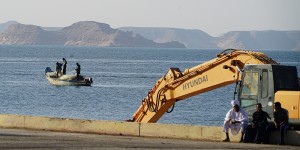 |
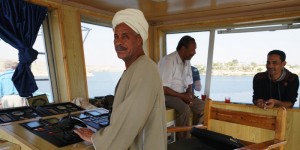 |
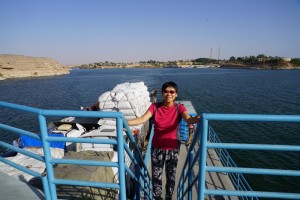 |
 |
We had a short drive from the landing to the border. We arrived at the check-point around 10am. After handing in our passports, we were told to wait. I did not know what happened but we did not get our passport back more than an hour later. We returned to our truck and moved to another compound where we waited again for a long time. We did not leave Egypt till 12:30pm. I have taken less than 15 minutes to go through the immigration at the Cairo airport on arrival. I have no idea why it has taken us two and a half hours to leave the country. Perhaps we were on a truck which the Egyptian customs authority had to take time to process the necessary papers.

